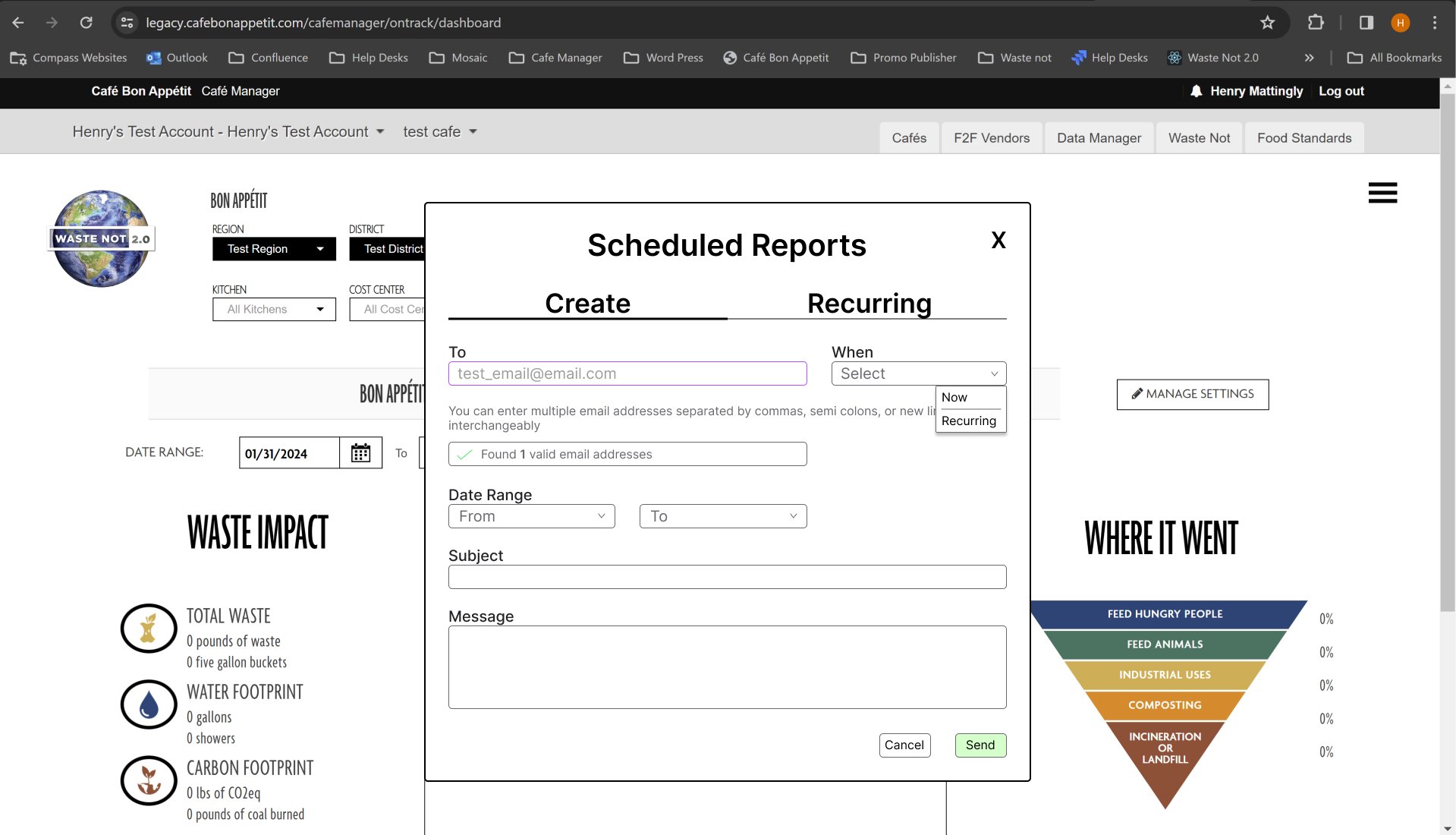Bon Appetit Management Company
Waste Not
Overview
As a Product Support Specialist at Bon Appétit, my primary role was to ensure the successful launch and ongoing support of new programs and features for our products. I worked closely with product managers, developers, and other team members to design, implement, and maintain new initiatives.
Roles
Product Support Specialist, Sole UX designer, and researcher
The Problem
The current system requires users to manually generate and send reports to their personal email addresses, making it cumbersome to share reports with others. Additionally, users, particularly administrators, must manually retrieve reports on a recurring basis, such as daily, weekly, or monthly.
The Solution
To enhance the user experience for administrators, we proposed implementing an automated reporting feature. This feature would allow users to directly send reports to any email address from within their dashboard and schedule one-time or recurring reports. Additionally, users could customize the date range for reporting schedules, providing greater flexibility.
Design Process
Research
Conduct User Surveys
Target Audience: Survey accounts that actively use Waste Not.
Survey Questions:
What are the biggest challenges you face when using Waste Not?
Are there any features or functionalities you wish Waste Not had?
How could we improve the user experience of Waste Not?
Analyze Support Tickets
Track recurring pain points raised in support tickets.
Categorize issues based on frequency and impact on user experience.
Observe User Workflows
Select a representative group of accounts to participate in user observation sessions.
Watch users perform common tasks within Waste Not.
Ask users to share their thoughts and suggestions during the observation sessions.
Low-fi Prototype
Our low-fi prototype provided insight into the optimal placement, functionality, and workflow of the new reporting system. Based on these findings, we determined that integrating the system within the existing reporting section would offer the most seamless user experience. By maintaining a familiar location and interface, we aimed to minimize disruption and ensure a smooth transition for users as they adopt the new reporting features.
Improvements
Rephrase verbiage
Edit the display of date ranges
Correct inconsistent spacing
Create easier to understand dropdown’s
Implement breadcrumbs to help admins with multiple accounts easily identify which account they are viewing
There were multiple variations of each dropdown that were tested by users. The data gathered after testing with users show the final design dropdown’s were most liked and wanted.
Hi-Fi designs
After creating the Hi-Fi designs we launched a MVP to select accounts to learn and iterate along the way.
Our MVP focused on accounts gathering Waste Not data and their recurring reports. Following positive feedback from this initial phase, it was decided to push a full launch of the new reporting system.
Impact
Introducing this new feature streamlined the multi-step process of sharing data with stakeholders. Users appreciated the simplicity of generating multiple recurring reports, and overall, the new capability to send Waste Not data to accounts was very well received.
Takeaways
During my first experience working on the design process for a live product, I learned a great deal. I focused on keeping all stakeholders informed throughout each step, gathering research, and documenting designs for the engineers. Identifying the optimal balance between business requirements and user needs is crucial for defining the project's scope. I learned there are many rules to be implemented on certain features that should be easy for a user to understand at a glance and how to design for that.














